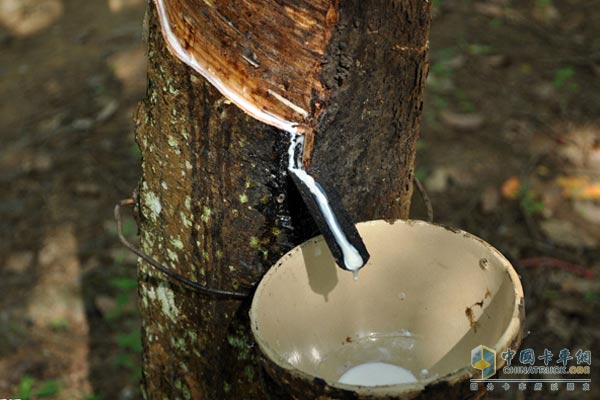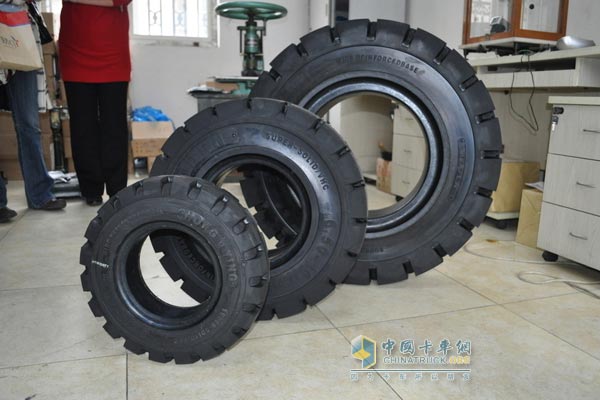According to the statistics from China Association of Automobile Manufacturers, the sales of automobiles in the first half of 2013 reached 10.782 million, an increase of 12.34% over the same period of last year. Among them, the year-on-year growth rate of SUVs in passenger vehicles was as high as 41.56%. However, the rapid growth of automobile consumption has not brought about the "blowout" of tire sales, and it has not driven the growth of tire raw material rubber consumption. This situation is confirmed by market data. Wind statistics show that since the beginning of the year, the auto index has risen by 12.13%, while the rubber index has dropped by 21.56%. According to industry insiders, the reason for the divergence of data from the automotive segmentation perspective is that the increase in automobile consumption is mainly due to a significant increase in passenger vehicle sales, while the sales of slower heavy trucks, which are affected by slowdown in infrastructure investment, are still slow. . In the rubber market, the demand for heavy-duty tires, which account for about 70% of the total, has slowed down, which has also constrained the development of the rubber industry. In addition, factors such as the high inventory level of natural rubber and the unbalanced supply and demand caused by excessive rubber production capacity have become the “worry†of the rubber industry. One note: heavy truck sales are hidden According to data from the China Association of Automobile Manufacturers, from January to June this year, the heavy truck market sold a total of 403,000 vehicles of various types, an increase of 8.4% from 372,000 units in the same period last year. Compared with the 17% year-on-year decline in the first quarter of this year, the second quarter was a critical period for the heavy-duty truck sales to go from negative to positive in the first half of this year. From the second quarter data, the sales of heavy trucks in the quarter totaled 233,913 units, which was a substantial increase of 39% year-on-year. In particular, in the traditional off-season in June, the “off-season is not thinâ€, with the sales of 75,000 units, a year-on-year increase of 51% and a slight decrease of 2.8% from the previous quarter. This impressive performance of heavy trucks drove the price of Hujiao out of a period from the "flying down" in the first quarter to the "shock rebound" in the second quarter. “The heavy truck industry is the 'big head' of the rubber market and accounts for about 70% of the demand for rubber.†Zhan Jianping, analyst at Hongyuan Securities Chemical Industry, told the China Securities Journal that sales of heavy trucks have a strong correlation with rubber trends. . Judging from the market performance of previous years, 2009 was affected by the 4 trillion stimulus, infrastructure investment increased, and the heavy truck sales increased drastically, resulting in a stronger rubber price. The Hujiao market experienced a big market. However, with the advancement of capacity reduction and the country’s increase in the macro-control of the real estate market, the reduction in infrastructure investment and the decline in heavy truck sales, the Hujiao market has followed a downturn. It is worth noting that for heavy investment in capital goods, such as heavy investment, the first half of the fixed asset investment, especially the recovery of infrastructure investment and real estate investment is very important. However, at the same time as terminal demand recovery, heavy truck sales have more or less "virtual growth". The China Bond Ratings Report believes that due to the combined effects of various factors, such as leading to early purchases and demand for new products, the heavy trucks will decline at the end of the second quarter and achieve positive growth, which will in turn lead to significant phase improvements in commercial vehicles. However, the early purchase in the second quarter has a certain degree of overdraft short-term demand, coupled with the lack of macroeconomic recovery, the high-speed growth of heavy trucks deviating from the economic fundamentals in the second half of the year is not sustainable, and the growth rate is expected to fall. Some analysts also pointed out that due to early invoicing and advance consumption, the "virtual growth" driven by the national 4 standard not only affected the trend of the heavy truck market in the first half of the year, but also further increased the sales growth in the first half of the year (heavy truck industry from January to May this year. The year-on-year increase was 1.8% from January to June, which reached 8.4%. It also affected the development of the heavy-duty truck market in the second half of the year, especially in the third quarter, and brought more uncertainty and negative factors to the heavy-duty truck industry in the second half of the year. If heavy truck sales do not have the worry of “inflatedâ€, then the semi-annual report of the heavy-duty truck industry should have the same impressive performance. However, from the summary of the auto industry's mid-year report, the growth rate of operating income and net profit of the passenger vehicle industry has increased by more than 20% year-on-year, while the performance of the heavy truck industry has continued to decline. In the first half of the year, the growth rate of the truck industry was -10%, and the growth rate of net profit was -40%. Taking Aeolus as an example, the company’s first-half revenue fell 17.14% year-on-year; net profit attributable to the parent company decreased 6.21% year-on-year. According to the analysis, the company's domestic matching market was mainly due to the poor performance of construction machinery and heavy trucks. Monita’s latest survey of heavy truck dealers in August showed that, subject to the impact of the national 4 standard, the survey’s sales expectations for the next period of time are still slightly pessimistic. National 4 standards in different cities or announced the implementation, or delayed implementation, or remain silent in the state of confusion aggravated the wait-and-see mood of consumers, and formed a significant drag on heavy truck sales. II: Inventories are still high “Global rubber stocks have steadily increased. In recent years, global stocks have maintained a large growth rate of 300,000 tons per year.†Shihai Industrial Futures analyst said that last year, the global stock of natural rubber was 1.56 million tons this year, 1.87 million tons. It is expected to reach 2.17 million tons next year. London Rubber Industry Consulting firm The Rubber Economist also expects that the global rubber stocks in 2014 will be 2.17 million tons, the highest level since 2001, and the rubber stock consumption ratio will increase from 1.2 months in early 2012 to 2.2 months. China Securities Futures Xu Hao believes that although inventory pressure has been declining, it is still at a historical high and entered the middle and late period of the third quarter. With the full recovery of natural rubber supply, according to the growth rate of domestic natural rubber imports over the same period, Six months inventory will once again return to the rising trend. “In addition, the domestic consumer end situation is still not optimistic.†Xu Xin said that due to the slowdown in foreign tire demand, China's tire exports showed a clear downward trend, from January to May this year, the year-on-year growth rate of only 2.7% year-on-year, compared to last year In the same period, the 8% year-on-year growth slowed markedly, and the share of exports in domestic tire production also fell from 45% in the same period of last year to 43%; and the growth rate of domestic consumption also slowed down from last year by 18.5%. To 16.4%. Therefore, due to the slowdown in tire production, the sustainability and effectiveness of domestic pressure relief on natural rubber stocks remains questionable. China is a big consumer of natural rubber , with average annual consumption accounting for 30% of global consumption; most rubber is used to produce automobile tires. Therefore, the tire industry's production is worthy of attention. China Rubber Industry Association Tire Branch recently released statistics on the first half of 46 major tire companies. From January to June, the tire industry's profit increased by 23.5%. However, tire production increased by 6.7%, sales revenue decreased by 1.6%, export delivery value decreased by 2.1%, and inventory increased by 6.8%, which was at a high inventory level. The high inventory of tire companies may lead to further reduction of upstream raw rubber demand, which will push up rubber stocks. High inventory pressure will lead to rubber prices falling all the way. In the first half of the year, the decline in natural rubber was around 20% year-on-year, while that of styrene-butadiene rubber and butadiene-butadiene rubber was around 32% and 40%. 12v Car Compressor,12v Car Compressor for Kia,6pk 12v Car Compressor Kasen Auto Air Condition Parts Co., Ltd. , http://www.gdclutches.com

Rolling wheel-mounted rubber industry